 Backend Development
Backend Development Python Tutorial
Python Tutorial Integration of Django Prophet and machine learning: How to use time series algorithms to improve forecast accuracy?
Integration of Django Prophet and machine learning: How to use time series algorithms to improve forecast accuracy?
Integration of Django Prophet and machine learning: How to use time series algorithms to improve forecast accuracy?
Introduction:
With the continuous development of technology, machine learning has become an important tool in the field of prediction and analysis. However, in time series forecasting, traditional machine learning algorithms may not achieve the desired accuracy. To this end, Facebook has open sourced a time series prediction algorithm called Prophet, which can be used in conjunction with the Django framework to help developers predict future time series data more accurately.
1. Introduction to Django
Django is an open source web framework based on Python, designed to help developers quickly build efficient and scalable web applications. It provides a range of useful tools and features that simplify the web application development process.
2. Introduction to Prophet
Prophet is an open source time series prediction algorithm launched by Facebook. It is based on a statistical model that combines factors such as seasonality, trends, and holidays to efficiently and accurately predict future time series data. Compared with traditional machine learning algorithms, Prophet is more suitable for processing time series data with obvious seasonality and trends.
3. Django Prophet integration
In order to integrate Prophet with Django, we need to install some necessary software packages and write some code examples. The following are the specific steps for integration:
- Install the required software packages
First, we need to install Django and Prophet. Run the following command in the command line:
pip install django pip install fbprophet
- Create Django Project
Create a new Django project and add a new application. Run the following command in the command line:
django-admin startproject myproject cd myproject python manage.py startapp myapp
- Data preparation
Create a new filedata.pyin the myapp directory and prepare it in it Time series data. For example, we can create a file namedsales.csvthat contains two columns of data: date and sales.
日期,销售额 2022-01-01,1000 2022-01-02,1200 2022-01-03,800 ...
- Data preprocessing
Inmyapp/views.py, we can use Pandas to read the data file and perform some preprocessing operations, such as Convert a date column to Pandas' Datetime format.
import pandas as pd
def preprocess_data():
df = pd.read_csv('sales.csv')
df['日期'] = pd.to_datetime(df['日期'])
return df- Prophet model training and prediction
Next, we need to write some code to train the Prophet model and make predictions.
from fbprophet import Prophet
def train_and_predict(df):
model = Prophet()
model.fit(df)
future = model.make_future_dataframe(periods=30) # 预测未来30天
forecast = model.predict(future)
return forecast- Django Views and Templates
Inmyapp/views.py, create a new view function and callpreprocess_data()andtrain_and_predict()function.
from django.shortcuts import render
from .data import preprocess_data, train_and_predict
def forecast_view(request):
df = preprocess_data()
forecast = train_and_predict(df)
context = {'forecast': forecast}
return render(request, 'myapp/forecast.html', context)Create a new HTML template file forecast.html in the myapp/templates/myapp/ directory and display the prediction results in it.
<html>
<body>
<h1 id="销售额预测结果">销售额预测结果</h1>
<table>
<tr>
<th>日期</th>
<th>预测销售额</th>
<th>上界</th>
<th>下界</th>
</tr>
{% for row in forecast.iterrows %}
<tr>
<td>{{ row[1]['ds'] }}</td>
<td>{{ row[1]['yhat'] }}</td>
<td>{{ row[1]['yhat_upper'] }}</td>
<td>{{ row[1]['yhat_lower'] }}</td>
</tr>
{% endfor %}
</table>
</body>
</html>- Configure URL routing
Add URL routing configuration inmyproject/urls.pyand bindforecast_viewto a URL.
from django.urls import path
from myapp.views import forecast_view
urlpatterns = [
path('forecast/', forecast_view, name='forecast'),
]At this point, we have completed the Django Prophet integration process. Now, run the Django server and visit http://localhost:8000/forecast/ in the browser to see the sales forecast results.
Conclusion:
This article introduces how to use the Django framework to integrate the Prophet time series forecasting algorithm to improve forecast accuracy. By combining Prophet with Django, developers can more easily process and analyze time series data and derive accurate prediction results. At the same time, this article also provides code examples to help readers better understand and apply this integration process. I hope this article will be helpful to developers who are looking for time series forecasting solutions.
The above is the detailed content of Integration of Django Prophet and machine learning: How to use time series algorithms to improve forecast accuracy?. For more information, please follow other related articles on the PHP Chinese website!
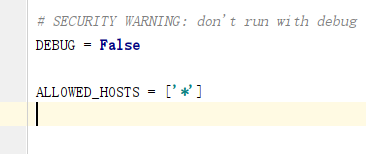 怎么将Django项目迁移到linux系统中Jun 01, 2023 pm 01:07 PM
怎么将Django项目迁移到linux系统中Jun 01, 2023 pm 01:07 PMDjango项目配置修改我们需要把原先的Django项目进行修改才能更好地进行项目迁移工作,首先需要修改的是settings.py文件。由于项目上线之后不能让用户看到后台的运行逻辑,所以我们要把DEBUG改成False,把ALLOWED_HOSTS写成‘*’,这样是为了允许从不同主机进行访问。由于linux中如果不加这句可能会出现文件找不到的情况,所以我们要把模板的路径进行拼接。由于做Django项目肯定进行过数据库的同步,所以我们要把migrations
 centos+nginx+uwsgi部署django项目上线的方法May 15, 2023 am 08:13 AM
centos+nginx+uwsgi部署django项目上线的方法May 15, 2023 am 08:13 AM我django项目叫yunwei,主要app是rabc和web,整个项目放/opt/下如下:[root@test-codeopt]#lsdjango_virtnginxredisredis-6.2.6yunwei[root@test-codeopt]#lsyunwei/manage.pyrbacstatictemplatesuwsgiwebyunwei[root@test-codeopt]#lsyunwei/uwsgi/cut_log.shloguwsgi.iniuwsgi.loguwsgi.p
 Django框架中的数据库迁移技巧Jun 17, 2023 pm 01:10 PM
Django框架中的数据库迁移技巧Jun 17, 2023 pm 01:10 PMDjango是一个使用Python语言编写的Web开发框架,其提供了许多方便的工具和模块来帮助开发人员快速地搭建网站和应用程序。其中最重要的一个特性就是数据库迁移功能,它可以帮助我们简单地管理数据库模式的变化。在本文中,我们将会介绍一些在Django中使用数据库迁移的技巧,包括如何开始一个新的数据库迁移、如何检测数据库迁移冲突、如何查看历史数据库迁移记录等等
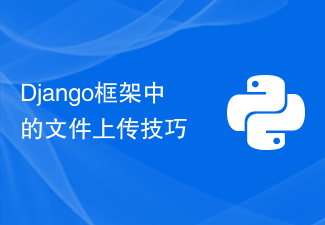 Django框架中的文件上传技巧Jun 18, 2023 am 08:24 AM
Django框架中的文件上传技巧Jun 18, 2023 am 08:24 AM近年来,Web应用程序逐渐流行,而其中许多应用程序都需要文件上传功能。在Django框架中,实现上传文件功能并不困难,但是在实际开发中,我们还需要处理上传的文件,其他操作包括更改文件名、限制文件大小等问题。本文将分享一些Django框架中的文件上传技巧。一、配置文件上传项在Django项目中,要配置文件上传需要在settings.py文件中进
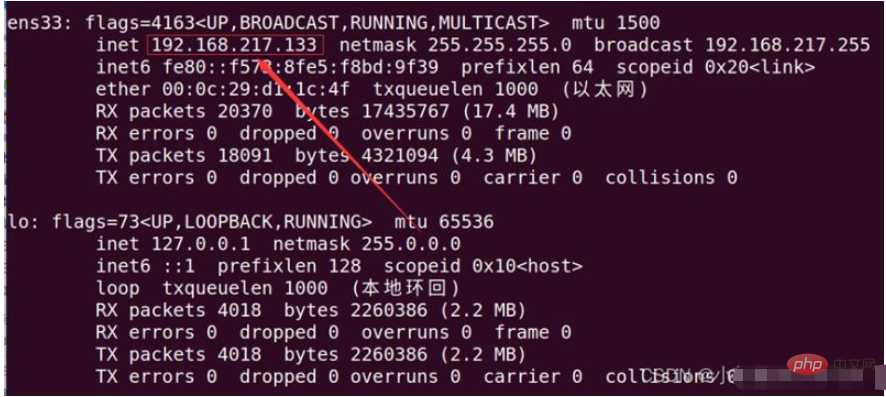 如何用nginx+uwsgi部署自己的django项目May 12, 2023 pm 10:10 PM
如何用nginx+uwsgi部署自己的django项目May 12, 2023 pm 10:10 PM第一步:换源输入命令换掉Ubuntu的下载源sudonano/etc/apt/sources.list将以下全部替换掉原文件,我这里用的是阿里的源,你也可以换其他的。debhttp://mirrors.aliyun.com/ubuntu/bionicmainrestricteddebhttp://mirrors.aliyun.com/ubuntu/bionic-updatesmainrestricteddebhttp://mirrors.aliyun.com/ubuntu/bionicunive
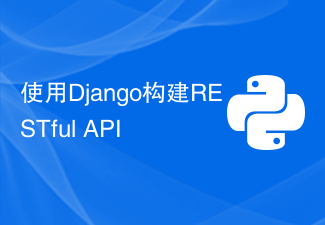 使用Django构建RESTful APIJun 17, 2023 pm 09:29 PM
使用Django构建RESTful APIJun 17, 2023 pm 09:29 PMDjango是一个Web框架,可以轻松地构建RESTfulAPI。RESTfulAPI是一种基于Web的架构,可以通过HTTP协议访问。在这篇文章中,我们将介绍如何使用Django来构建RESTfulAPI,包括如何使用DjangoREST框架来简化开发过程。安装Django首先,我们需要在本地安装Django。可以使用pip来安装Django,具体
 使用Python Django框架构建博客网站Jun 17, 2023 pm 03:37 PM
使用Python Django框架构建博客网站Jun 17, 2023 pm 03:37 PM随着互联网的普及,博客在信息传播和交流方面扮演着越来越重要的角色。在此背景下,越来越多的人开始构建自己的博客网站。本文将介绍如何使用PythonDjango框架来构建自己的博客网站。一、PythonDjango框架简介PythonDjango是一个免费的开源Web框架,可用于快速开发Web应用程序。该框架为开发人员提供了强大的工具,可帮助他们构建功能丰
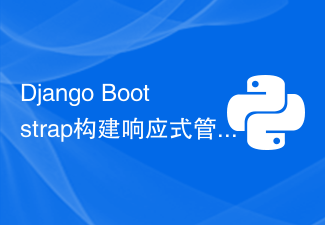 Django+Bootstrap构建响应式管理后台系统Jun 17, 2023 pm 05:27 PM
Django+Bootstrap构建响应式管理后台系统Jun 17, 2023 pm 05:27 PM随着互联网技术的快速发展和企业业务的不断扩展,越来越多的企业需要建立自己的管理后台系统,以便于更好地管理业务和数据。而现在,使用Django框架和Bootstrap前端库构建响应式管理后台系统的趋势也越来越明显。本文将介绍如何利用Django和Bootstrap构建一个响应式的管理后台系统。Django是一种基于Python语言的Web框架,它提供了丰富的功


Hot AI Tools

Undresser.AI Undress
AI-powered app for creating realistic nude photos

AI Clothes Remover
Online AI tool for removing clothes from photos.

Undress AI Tool
Undress images for free

Clothoff.io
AI clothes remover

AI Hentai Generator
Generate AI Hentai for free.

Hot Article

Hot Tools

mPDF
mPDF is a PHP library that can generate PDF files from UTF-8 encoded HTML. The original author, Ian Back, wrote mPDF to output PDF files "on the fly" from his website and handle different languages. It is slower than original scripts like HTML2FPDF and produces larger files when using Unicode fonts, but supports CSS styles etc. and has a lot of enhancements. Supports almost all languages, including RTL (Arabic and Hebrew) and CJK (Chinese, Japanese and Korean). Supports nested block-level elements (such as P, DIV),

Dreamweaver CS6
Visual web development tools

SublimeText3 Mac version
God-level code editing software (SublimeText3)

SublimeText3 Linux new version
SublimeText3 Linux latest version

SublimeText3 English version
Recommended: Win version, supports code prompts!






